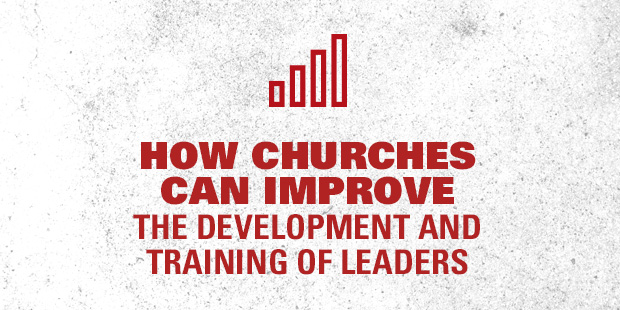How do you know if you might make a good church planter? There are great online tools to help determine your readiness to plant and every church planting network and denomination has some form of formal assessment, if you feel called to plant that’s where you should start.
But what if you don’t know if you’re called? What if you just kind of wonder if planting a church (or helping plant a church) might be in your future? Here are eight traits based on eight biblical characters that might indicate you have the stuff to start a church from scratch.
(SPOILER ALERT: IT STARTS WITH BEING CRAZY!)
You might be a church planter if…
> You’re crazy like Noah
Noah didn’t know how to build a boat, gather animals or run a floating zoo, but when God said build the Ark Noah grabbed a hammer and a saw and went to work. His neighbors were right, Noah was a little nuts.
Church planters are a little nuts. They look at people far from God and see future church elders. They look at a run down middle school and see a great place to have church. They look at a tatted up bar singer and see a potential worship leader.
Most of the successful church planters I know are a little crazy.
> You’re arrogant like Nehemiah
Nehemiah had the audacity to believe that a ragtag group of rejects could be turned into a top-notch building crew. He thought this newly assembled crew could rebuild a massive wall, that laid in ruins for 70 years, in a matter of weeks. And Nehemiah thought he was just the man to lead the project. Nehemiah was a little arrogant.
A church planter goes to a city where the vast majority of people don’t attend church, where dozens of churches with massive budgets and bloated staffs are slowly dying, a community where a dozen leaders before him have failed to build a sustainable church. He looks at the dismal statistics and says, “I can do this.”
Surviving as a church planter requires a little arrogance.
> You’re determined like Caleb
When Caleb is 80 years old he goes to his long time friend Joshua and says, “Listen, dude. I have done everything you’ve asked me to do. I have fought side-by-side with you to drive the heathens from the Promised Land for 40 years. I’ve put up with the yammering and complaining of the Israelites. I’ve eaten so much manna and quail I can’t face another chicken sandwich. Now, GIVE ME MY MOUNTAIN!”
Church planters struggle understanding the word “No”. When the school says “No” they hear, “Not today, come back tomorrow.” When their next door neighbor says, “NO” they hear, “Not yet.” When the high-capacity potential volunteer says “No” they hear “I don’t quite understand the vision.”
Great church planters are determined not to fail.
> You party like Matthew
When Matthew realizes Jesus is the long-awaited Messiah he doesn’t build a church, he doesn’t call a priest and he doesn’t write a poem; Matthew throws a party. And based on the guest list, Matthews gang of tax collectors and sinners, its likely a party to be remembered. The cops may or may not have been called.
Church planters who reach people who aren’t church shopping, people who don’t even think about church, know how to throw an epic party. There is music, there is laughter, things sometimes get a little out of hand. Church planting and party planning seem to go hand in hand.
Evangelistic church planters tend to party hard.
> You can lead a band of misfits like David
“David and his Mighty Men” sounds like a great title for a superhero movie. We have visions of brave soldiers straight out of the movie “300″ with square jaws, bulging muscles and wills of steel. But that isn’t who David’s mighty men were. Here’s their description from 1 Samuel 22:
“So David left Gath and escaped to the cave of Adullam. So his brothers and all his other relatives joined him there. Then others began coming-men who were in trouble or in debt or who were just discontented-until David was the captain of about 400 men.”
These “mighty men” were worthless malcontents running from the law. This was David’s leadership pipeline.
Church Planters build leaders from soon-to-be former drug addicts, deadbeat dads and unemployed blue-collar workers. The John Maxwell leaders play golf and attend a megachurch. Leaders in a church plant work the night shift and hang out at a bar. When I was trying to grow a church in Huffman, Texas my leader/misfits were a guy hiding from the IRS, a recovering cocaine addict and a guy who smoked a joint before church every Sunday morning to calm his nerves.
> You’re passionate like Peter
Peter meets Elijah and Moses and responds, “Let’s build a hotel right here!”
Jesus instructs Peter on foot washing so Peter says, “Give me bath!”
Jesus says that all the disciples will leave him and Peter proclaims, “I will never deny you!”
Peter hops out of boat in the middle of a lake, cuts off a guy’s ear, cusses out a servant girl and sobs his guts out when he realizes the depth of his betrayal.
Everything Peter does he does with passion.
Church planters lead with their heart. Their heart breaks when a marriage fails, they party like its 1999 every time someone commits their life to Christ, they get so excited they can’t stand themselves after every baptism. Church planters are obnoxious on Twitter because their emotions are on display for the world to see. I haven’t met a successful stoic church planter. I’m just glad Peter didn’t have a Facebook page.
> You’re tenacious like Paul
The Apostle Paul just didn’t know when to quit
Five different times the Jewish leaders gave me thirty-nine lashes. Three times I was beaten with rods. Once I was stoned. Three times I was shipwrecked. Once I spent a whole night and a day adrift at sea. I have traveled on my long journeys. I have faced danger from rivers and from robbers. I have faced danger from my own people, the Jews, as well as from the Gentiles. I have faced danger in the cities, in the deserts, and on the seas. And I have faced danger from men who claim to be believers but ar not. I have worked hard and long, enduring many sleepless nights. I have been hungry and thirsty and have often gone without food. I have shivered in the cold, without enough clothing to keep me warm.
After the third or fourth beating any normal person would have said, “Well, that’s about it for me”, but Paul wasn’t a normal person, he was a church planter.
The single biggest difference between a successful church planter and one who doesn’t make it is tenacity. The ability to continue to work and change and adapt until he finds a way to reach people far from God and mold them into a local faith community. This is different than doing the same thing over and over and hoping this time things will work out differently (tenacity vs persistence). Church planters are crazy, not insane.
> You love your city like Jesus
Jerusalem, the city that rejected Jesus more than any other was the city he loved most. Not long before he was crucified just outside the walls Jesus wept over the city he longed to save. He knew returning to Jerusalem for his final passover sealed his fate, but he loved the city and what it represented so much he refused to stay way. And it cost him his life.
The truly successful church planter, the one who makes a lasting difference, is willing to lay down his life for his city. His heart is broken by the lostness he sees and he can’t imagine ministering anywhere else. If he has to work two jobs to feed his family he will. The one thing he won’t do is abandon his city.
Are you a church planter (or someone who will help plant a church)? Are you obsessed with a city? Are you willing to do anything to reach that city? Can you take a punch? Can you mold a group of losers and outcasts into a band of mighty men? If you’re just that crazy, then yes, you might be a church planter.
Read more from Geoff here.

Tags: Church Planter, Church Planting, Geoff Surratt, Leadership Characteristics
|
What is MyVisionRoom? > | Back to Leadership >


































